Intro
As proposed in the previous blog post, I will investigate the possibility of turning home refrigerator into energy storage device, storing excess energy as cold, which hopefully will limit it's energy consumption during other parts of the day. To make things easier (and stick to this design challenge's theme) I will investigate using old (which usually means - simple) construction, probably scheduled for replacement in many households. This way, if everything goes as planned, not only some energy consumption optimization will be obtained, but old appliance saved from recycling.
Let's start with refrigerator's construction analysis that will tell us how difficult will be implementation of external control mechanism.
Home refrigerator construction
Most common home refrigerator type is a compressor based one. It's working principle describes the following diagram and description (obtained from https://phys.libretexts.org with accordance to the CC BY 4.0 license)
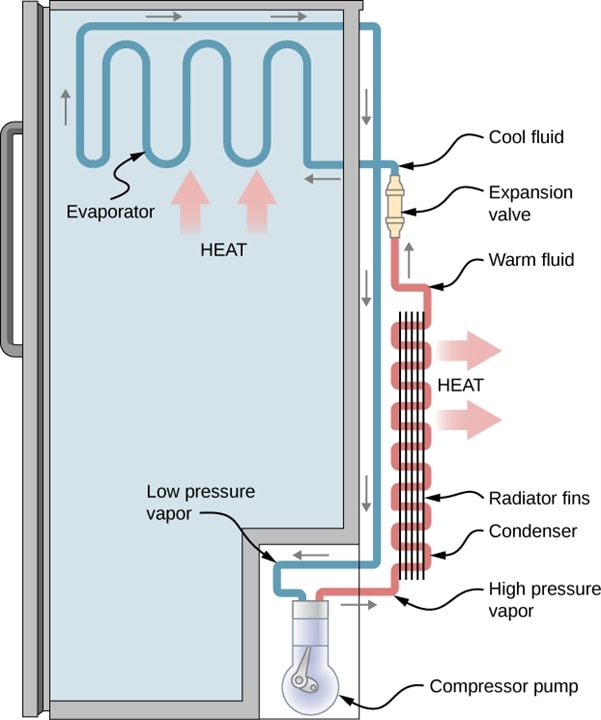
A schematic diagram of a household refrigerator. A coolant with a boiling temperature below the freezing point of water is sent through the cycle (clockwise in this diagram). The coolant extracts heat from the refrigerator at the evaporator, causing coolant to vaporize. It is then compressed and sent through the condenser, where it exhausts heat to the outside.
One element omitted in this description is a thermostat that is controlling compressor operation - switching it on when temperature inside is too high and switching off when temperature lowers sufficiently.
Electrical connections
Ok - you can tell - it is not a HVAC forum, show us some electrical schematics! This part is easier to say than to do, mainly because electrical schematics seems very simple. For example, one random sticker from Sharp refrigerator (obtained from stackexchange and licensed with CC BY-SA) looks like this:
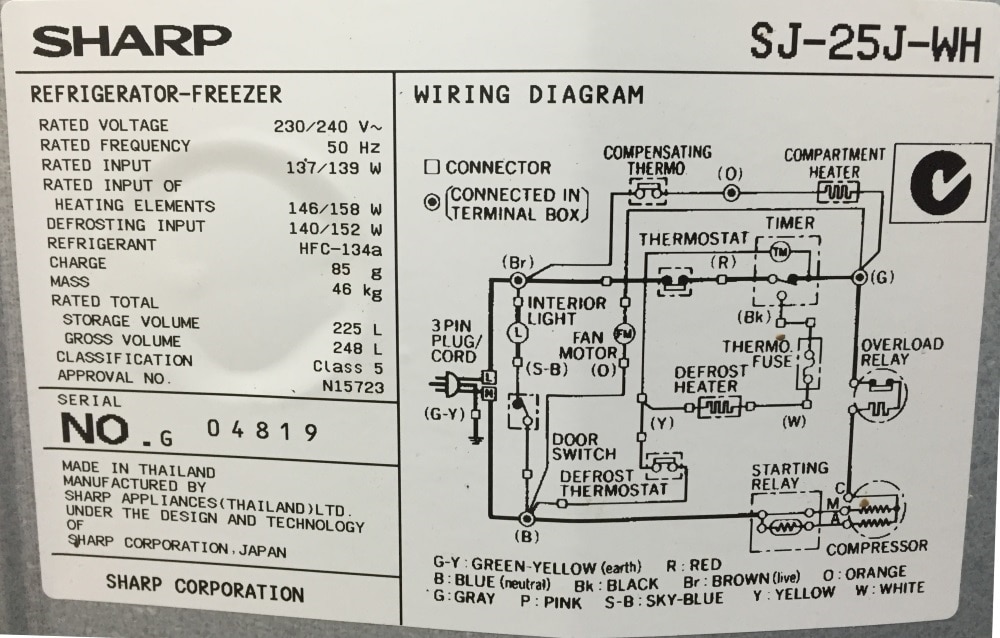
Omitting non-critical/not always present components, it looks like compressor is connected in series with thermostat, starter, overload protection device - and that's all...
Thermostat construction
Typical thermostat is purely mechanical one, with regulation based on mechanical means.
| {gallery}Thermostat external view |
|---|
|
|
|
|
The one analyzed in this paragraph was bought as (a cheap) universal replacement part. We can see that it is normally closed at the room temperature:
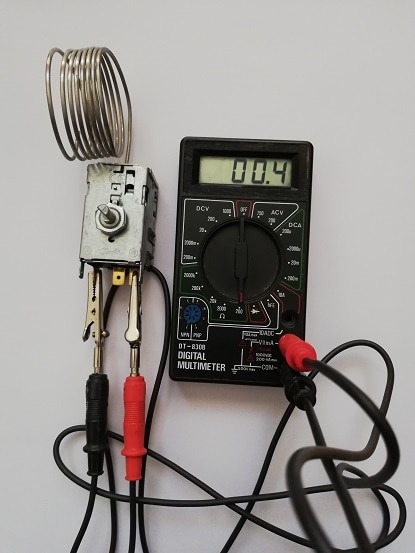
What is interesting that it stays closed in all the regulation range (that is inconsistent with observed behavior of most of the fridges, when appliance can be powered off simply by turning thermostat to the end of the regulation range) - maybe it is damaged or designed to be installed with appliances equipped with separate power switch.
Now it's time for checking what is inside our thermostat:
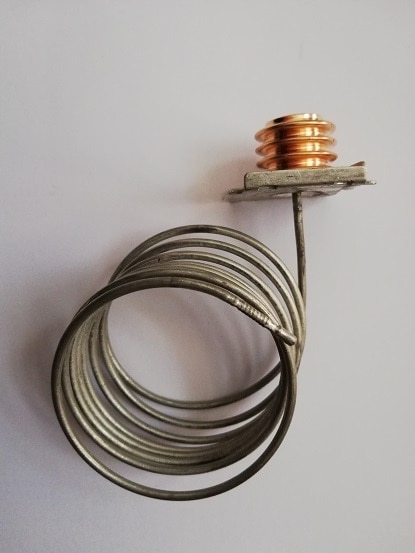
the main part of the thermostat it a pipe and a cylinder filled with gas that expands and contracts when temperature changes. Expanding cylinder keeps relay's contact closed, but is countered by the force regulated by the cam installed on the regulator's shaft, allowing for switching temperature regulation. Factory calibration is obtained by using regulation screw (both cam and screw pointed on the following picture using red lines)
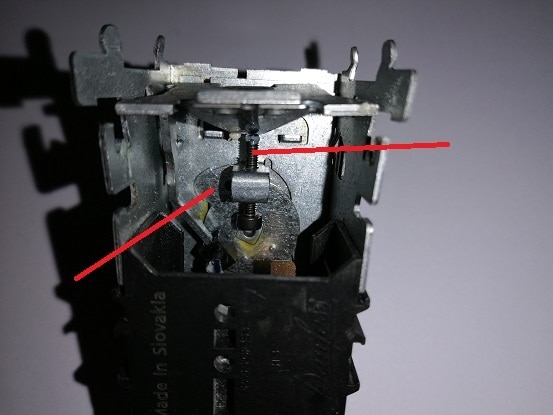
As we can see, it seems that traditional refrigerator can be easily controlled by use of additional relay connected in parallel to the thermostat's contacts. When this relay stays open, fridge operates as normal, but can be forced ON simply by closing it. Now - some means of measuring the temperature inside in the independent and non-invasive way would be needed.

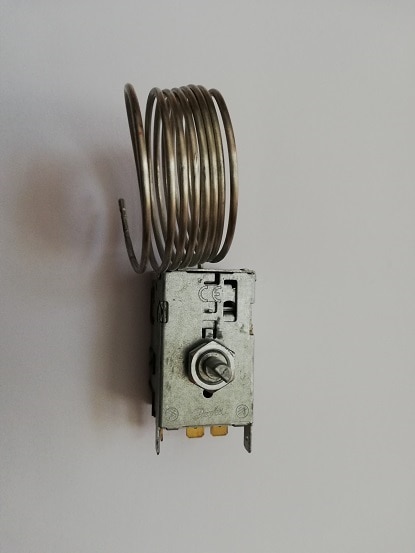
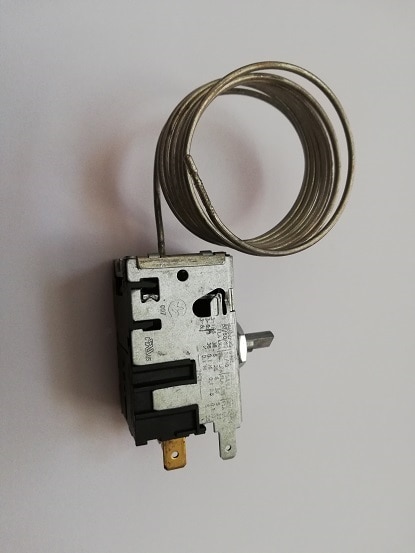
Top Comments
-

kmikemoo
-
Cancel
-
Vote Up
0
Vote Down
-
-
Sign in to reply
-
More
-
Cancel
Comment-

kmikemoo
-
Cancel
-
Vote Up
0
Vote Down
-
-
Sign in to reply
-
More
-
Cancel
Children